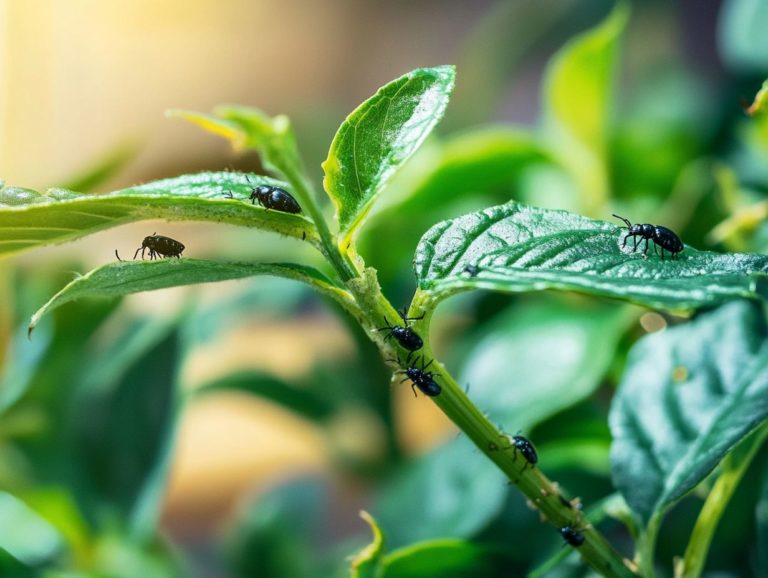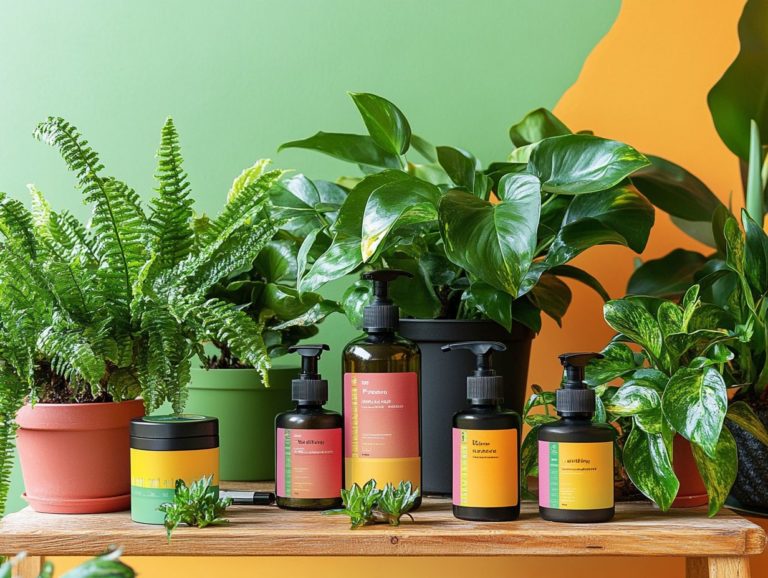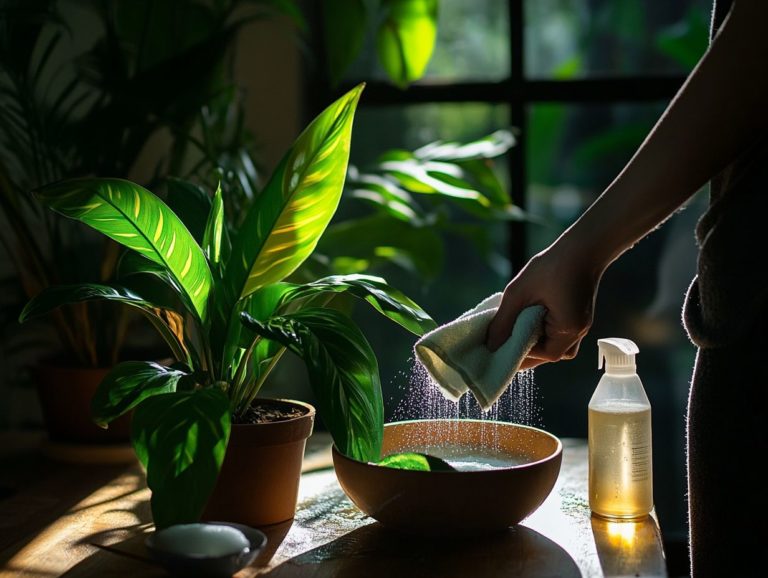Identifying Pest Damage on Indoor Foliage
Indoor plants can transform your space with vitality and elegance, but they can also invite unwelcome visitors pests that jeopardize their health and vibrancy.
For any plant enthusiast, understanding the common offenders is crucial. This article delves into the types of pests that frequently invade indoor greenery and guides you on how to spot the signs of damage while implementing effective prevention and treatment strategies. You will also find valuable tips for accurately diagnosing specific pests, ensuring your plants remain lush and stunning.
Contents
- Key Takeaways:
- Common Pests That Damage Indoor Foliage
- Signs of Pest Damage on Indoor Foliage
- Preventing Pest Damage on Indoor Foliage
- Treating Pest Damage on Indoor Foliage
- Diagnosing and Identifying the Specific Pest
- Frequently Asked Questions
- What are some common pests that damage indoor foliage?
- How do I identify pest damage on my indoor plants?
- What should I do if I suspect my indoor plants have pest damage?
- Are there any preventative measures I can take to avoid pest damage on my indoor plants?
- Are there any non-toxic ways to get rid of pests on my indoor plants?
- Can pest damage on my indoor plants be harmful to my health?
Key Takeaways:
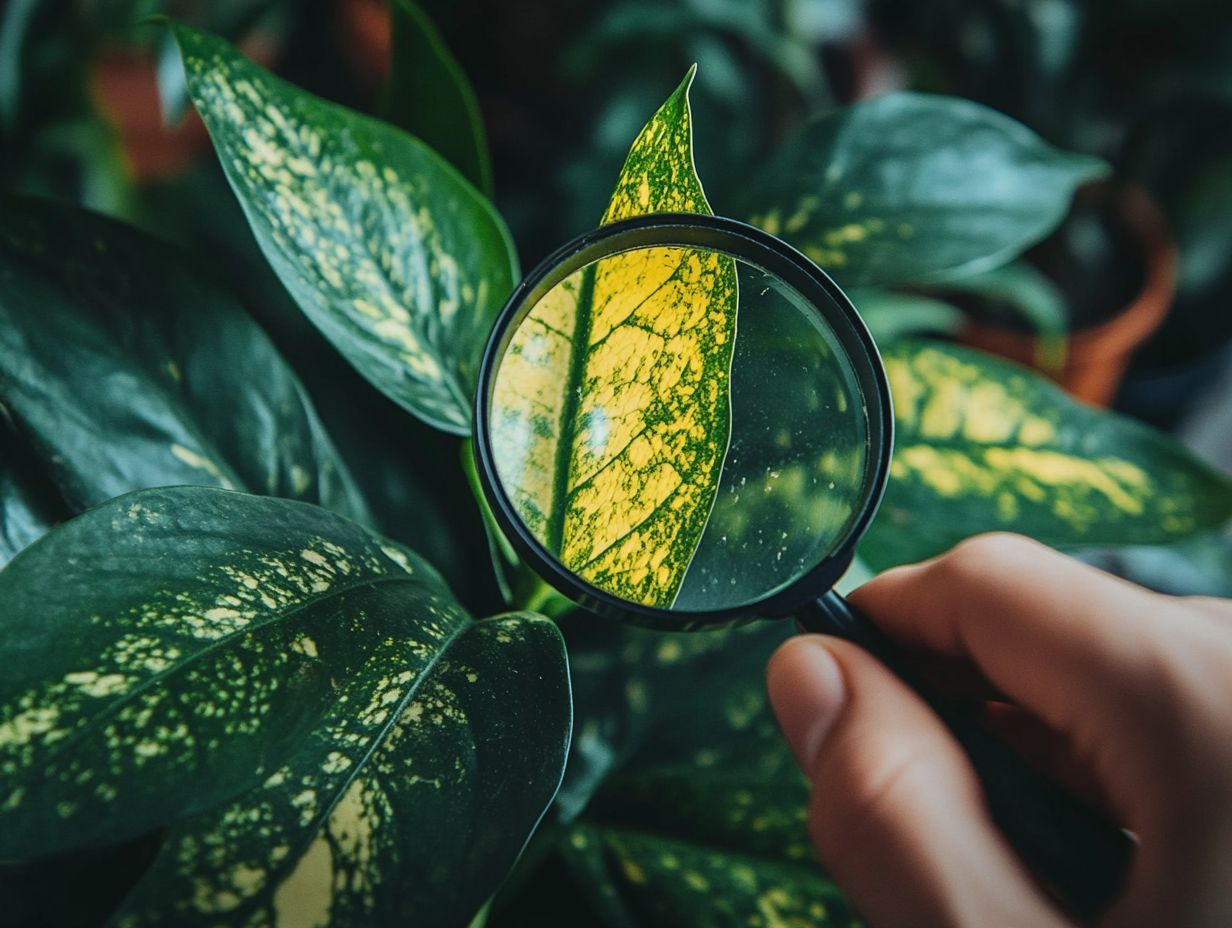
- Identify common pests that can damage indoor foliage, such as aphids, scale insects, and spider mites.
- Look for visual indicators and symptoms of pest damage, such as wilting, discoloration, and the presence of pests on leaves.
- Prevent pest damage using effective techniques like regular cleaning, proper watering, and natural methods, such as introducing beneficial insects those that help control pest populations.
Common Pests That Damage Indoor Foliage
Common pests that target indoor plants can profoundly impact their health, diminishing both vitality and aesthetic charm. Scale insects, mealybugs, aphids, spider mites, whiteflies, and thrips are among the culprits that can wreak havoc on your cherished greenery, including favorites like Alocasia micholitaiana and African blue basil.
To maintain a thriving indoor garden, it’s essential to understand these pests and their behaviors. This knowledge is important for preserving the health and beauty of your plants.
Types of Pests and Their Characteristics
Understanding the various types of pests that target indoor plants is key for managing pests effectively and ensuring optimal plant care. Recognizing the signs of these invaders early allows you to act quickly to safeguard your cherished greenery.
For example, scale insects often appear as small bumps on stems or leaves, quietly draining your plants vitality by feeding on their sap. This leads to yellowing and potential leaf drop. Mealybugs, with their distinctive white, fluffy coverings, tend to cluster at leaf joints, leaving behind a sticky residue that can attract even more unwelcome guests.
Aphids are notorious for their rapid reproduction, forming colonies that can engulf new growth. Meanwhile, spider mites may go unnoticed until their damage becomes apparent, with webbing serving as their telltale sign.
Understanding their lifecycles, which can involve multiple generations within a single season, is crucial for effective monitoring. Regular inspections of your plants for these visual cues, along with simple techniques like using sticky traps or checking for residues, can help you catch outbreaks before they spiral out of control.
Signs of Pest Damage on Indoor Foliage
Recognizing the signs of pest damage on your indoor plants is essential for preserving their health and preventing potential infestations. Symptoms can vary, from yellowing leaves and stunted growth to more alarming signs like leaf drop and webbing on your foliage, which demand immediate attention.
By conducting regular inspections of your plants, you empower yourself to catch pest issues early, ensuring that your indoor gardening efforts yield vibrant and thriving results.
Start inspecting your plants today and keep them thriving!
Visual Indicators and Symptoms
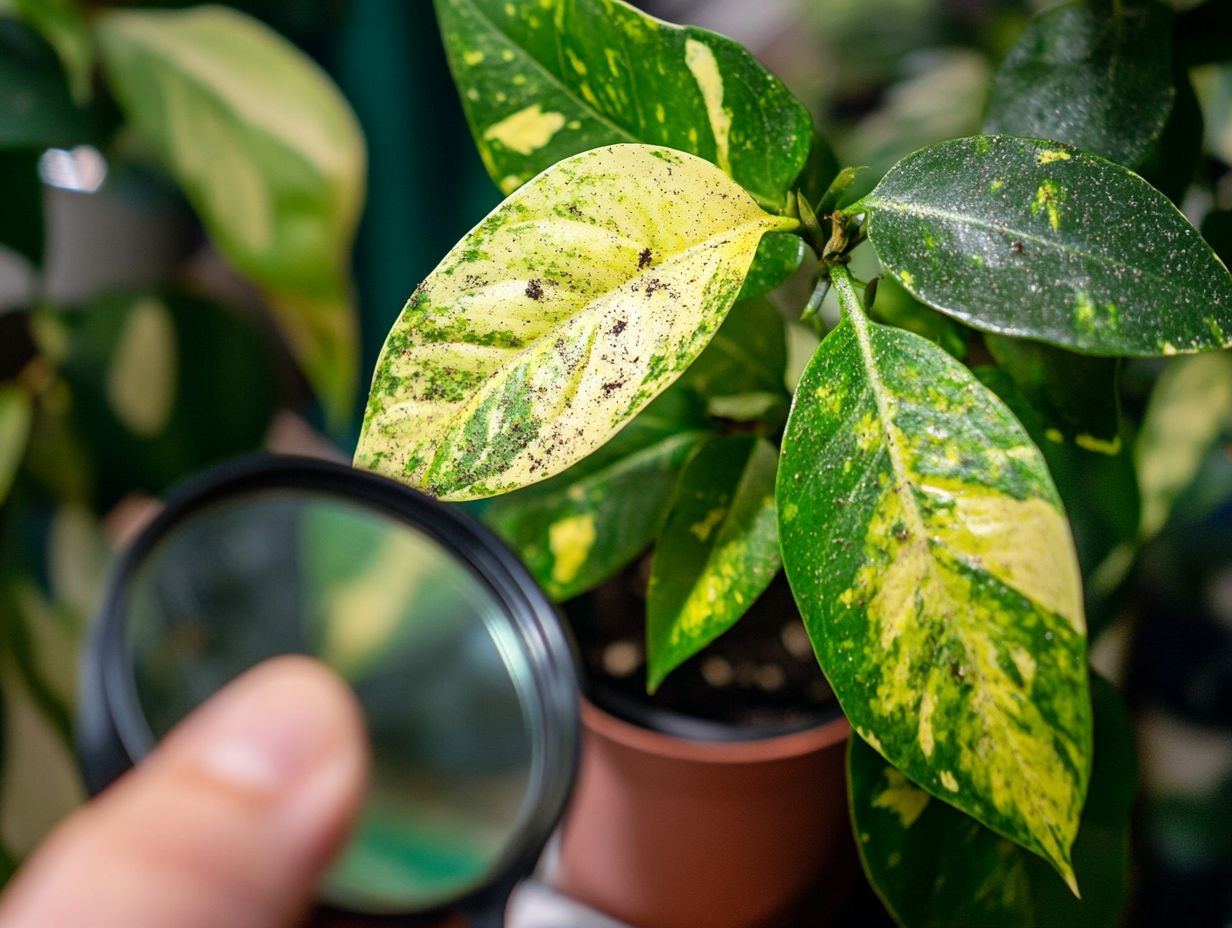
Visual indicators and symptoms of pest infestations can vary widely among different pest species. These variations offer you crucial insights for effective pest management.
For instance, scale insects tend to leave behind a sticky substance called honeydew. In contrast, aphid populations might cause leaves to curl and grow distorted.
Spider mites produce fine webbing on the undersides of leaves. This webbing can often be mistaken for mere dust unless you take a closer look.
Pests like whiteflies leave yellowing leaves and honeydew behind. To accurately identify these intruders, inspect your plants closely, noting these specific symptoms.
Also, consider the surrounding environmental factors. Monitoring for cast skins or eggs can further reveal the life stages of these pests, aiding in their differentiation.
By familiarizing yourself with these visual cues and understanding the behavior of various pests, you can implement timely interventions, ultimately safeguarding your plants from significant damage.
Preventing Pest Damage on Indoor Foliage
Preventing pest damage on your indoor foliage is crucial for cultivating a flourishing indoor garden and ensuring the health of your plants.
By adopting effective prevention techniques like conducting regular plant inspections you can significantly diminish the risk of pest infestations.
Managing your soil diligently is essential as well. Choose the right soil and containers to keep your plants thriving!
Utilizing beneficial insects such as ladybird beetles and green lacewing larvae can also help.
Integrating organic gardening practices, like applying neem oil and rosemary-based soap, bolsters your plants’ resilience against pests. This promotes their overall vitality.
Effective Prevention Techniques
Implementing effective prevention techniques is essential for maintaining the health of your indoor plants and keeping pest infestations at bay.
Using sticky traps can help you monitor pest populations. Regular inspections allow you to identify potential issues before they escalate.
Integrating natural methods, such as introducing beneficial insects, enhances your pest management efforts.
Applying insecticidal soap and diatomaceous earth can further promote a balanced ecosystem.
Ensuring proper air circulation is crucial; stagnant air can encourage mold and infestations.
Practicing good hygiene by cleaning your tools and removing dead leaves significantly reduces the chances of pests appearing.
Understanding the common signs of infestation empowers you to act swiftly. Yellowing leaves might indicate aphids, while webbing can hint at spider mites.
By staying vigilant and proactive, you can cultivate a thriving green space that flourishes under your care.
Treating Pest Damage on Indoor Foliage
Addressing pest damage on your indoor plants requires a meticulous approach to safeguard their health while effectively managing pest populations.
You have a range of options at your disposal. Natural treatments like neem oil and insecticidal soap are effective, as are chemical solutions such as horticultural oil.
Each method can be effective against common pests, but the key lies in choosing the right treatment tailored to the specific pest species and the severity of the infestation.
This highlights the crucial importance of accurately identifying the pest before proceeding with any treatment.
Natural and Chemical Treatment Options
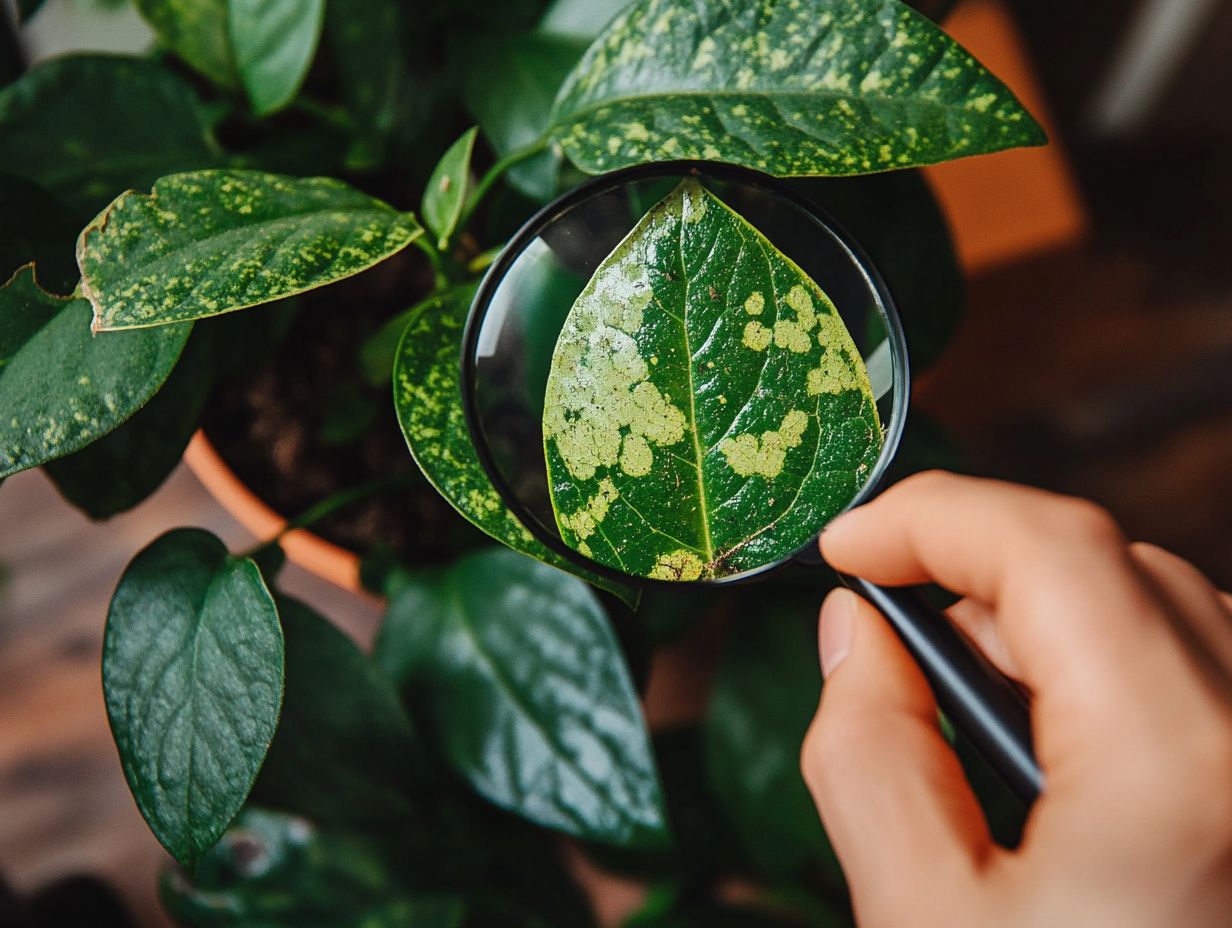
When it comes to pest treatments, you can explore both natural and chemical options. Each has its own advantages for your indoor gardening pursuits while keeping your plants safe.
This balance is crucial, especially considering the many types of pests that can harm your prized plants. For example, natural treatments, like diatomaceous earth, a natural powder made from tiny fossilized sea creatures, can effectively target soft-bodied insects such as aphids and spider mites without damaging the ecosystem. Additionally, recognizing bark beetles on indoor plants is essential for maintaining plant health.
Chemical treatments can also be very effective against resilient pests like fungus gnats and thrips. They provide quick solutions but may come with toxicity risks. Recognizing that improper application of these chemicals can unintentionally harm beneficial insects and disrupt your local environment is essential. Choosing wisely can make a huge difference in your garden s health!
Diagnosing and Identifying the Specific Pest
Accurately diagnosing and identifying the specific pest affecting your indoor plants is vital for effective pest management and treatment application. By understanding the characteristics and behaviors of different pests like the signs of spider mites or the cotton-like appearance of mealybugs you can tailor your pest control methods to directly address the issue.
This awareness not only leads to healthier plants but also enhances your overall indoor gardening experience.
Methods for Accurate Pest Identification
Use effective methods to identify pests for healthier and thriving indoor plants. Regularly check your plants for signs of infestation like unusual leaf discoloration or sticky residues. This is your first line of defense in spotting potential pests.
Be on the lookout for webbing or holes in leaves, as these can give you important clues about unwelcome visitors. Resources like signs your indoor plant has pests, pest identification guides, mobile apps, and consultations with gardening experts can boost your pest awareness, allowing you to respond quickly and effectively.
Incorporating strategies like routine plant inspections and using sticky traps can significantly improve early detection efforts. By familiarizing yourself with common pest behaviors and the environmental triggers that attract them, you can take proactive measures to ensure your indoor garden thrives while minimizing the risk of severe pest-related damage. Additionally, recognizing scale insects on indoor plants is crucial for effective pest management.
Frequently Asked Questions
What are some common pests that damage indoor foliage?
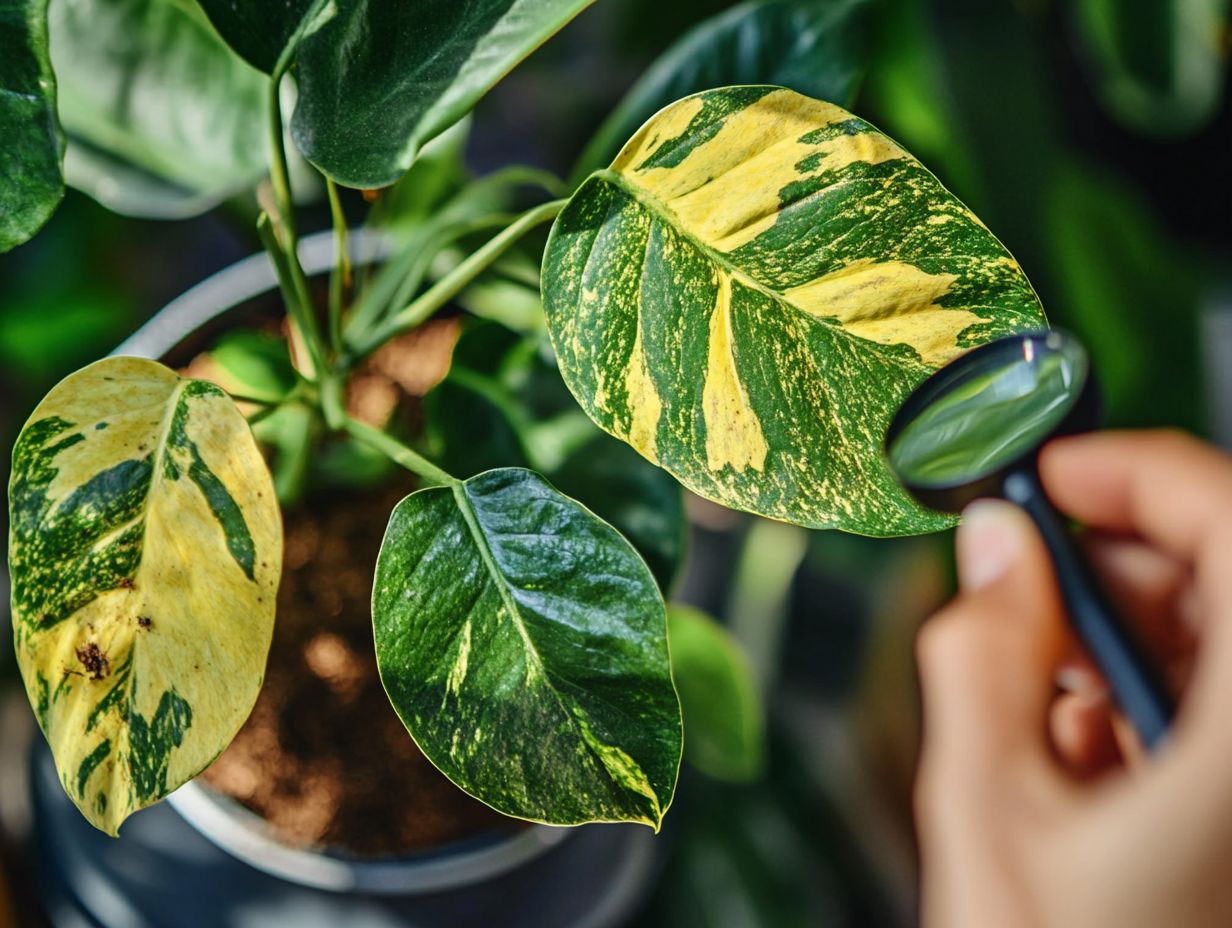
Some common pests that damage indoor foliage include spider mites, aphids, mealybugs, and scale insects.
How do I identify pest damage on my indoor plants?
Pest damage can appear in various ways, such as holes in the leaves, yellow or discolored spots, distorted growth, or a sticky residue on the plant. You may also see the pests themselves crawling on the leaves or hiding in crevices.
What should I do if I suspect my indoor plants have pest damage?
First, inspect the plant carefully to confirm it has pest damage. Then, keep it away from your other plants to prevent spreading. You can also try using natural methods, such as spraying the plant with a mixture of water and mild soap, to control the pests.
Are there any preventative measures I can take to avoid pest damage on my indoor plants?
Yes, regularly check your plants for signs of pest infestation and address any issues immediately. Keeping a clean and tidy indoor plant environment is also effective, as pests are attracted to debris, which can provide a breeding ground for them.
Are there any non-toxic ways to get rid of pests on my indoor plants?
Yes, there are several non-toxic ways to control pests on indoor plants. You can use soap designed to kill pests, neem oil, or even introduce helpful insects like ladybugs.
For a hands-on approach, try removing pests manually with a cotton swab dipped in rubbing alcohol. This method can be very effective!
Can pest damage on my indoor plants be harmful to my health?
Pest damage on indoor plants is usually not harmful to human health. Some pests, like spider mites, can irritate your respiratory system if they are inhaled in large amounts.
Act quickly to manage pest infestations and protect your plants! Always consider wearing protective gear when dealing with pests.

